Machine Learning where your long ID comes from
09 Apr 2017This article talks about a solution that involved sensitive information. As a result, all the names and numbers have been replaced with bogus information. The concepts are still relevant and applicable.
Everyone has an insurance number, and no one knows their actual insurance policy. Is it car or life insurance? Is it Platinum Shield Standard or Platinum Shield Plus NY? Bronze or Silver plan?
A client wanted to know and I was fresh out of my Machine Learing Class by Andrew Ng of Stanford and Coursera. But this had to be low maintenance, so mathematical python code was going to be a stretch. In came AWS Machine Learning to save the day.
Why not just use Regex?
- Regex might not exist for that particular provider
- Cannot learn and improve over time like a machine learning model
- Still unmanageable working with tens if not hundreds of providers as opposed to one Multiclass Classification Model
How do we machine learn a string?
WXY5678 isn’t the greatest thing to plot, so how do you draw a decision boundary around it?
I opted to make each digit a dimension, and simply plot that one character in its own plane. Then rely on the multidimensional power of machine learning to intuit who the originator was.
Therefore WXY5678 becomes an array of seven features, a seven dimensional vector:
[W,X,Y,5,6,7,8]
We can’t plot W though can we? Yes we can, by translating [0-9A-Z] to be a number from 0-35, essentially using our numbers as base 36.
[32,33,34,5,6,7,8]
Starting with the first digit: one dimension
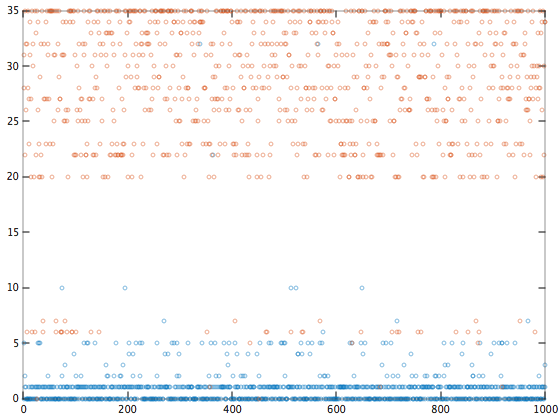 Octave Plot of the first digit for two policies
Octave Plot of the first digit for two policies
Here we have plotted the first digit of two policies for one thousand numbers, and the pattern is obvious. A simple linear regression would yield the following split:
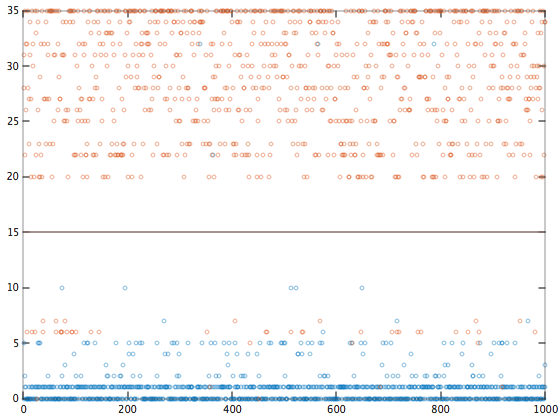
We can now confidently (>90%) predict the policy just based on the first digit. We take this concept and extrapolate it in two directions:
- Add more policies, and therefore more classes (different colored dots)
- Add more digits, and therefore more dimensions
More policies, more classes
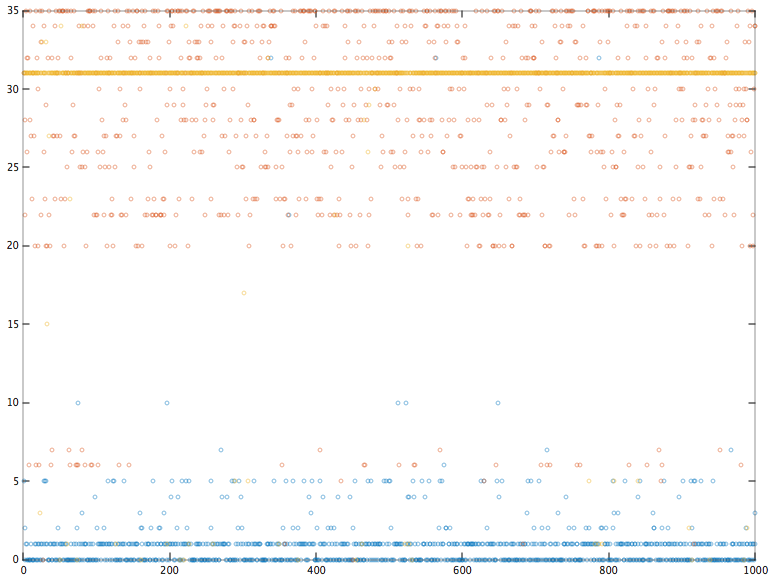
The yellow bar is actually a third policy, and notice that it’s hardcoded to one value, resulting in a point cloud so thick, it looks like a line. Again, we can easily intuit this policy from the others with high confidence, with just the first digit.
Will our luck continue as we add more policies?
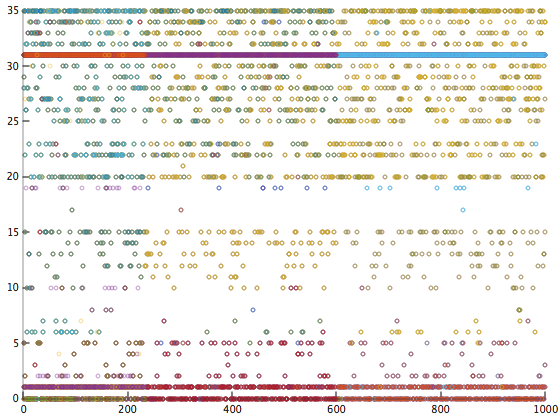
No.
Above, you’ll see a plot of just eight policies among the hundred we’re trying to classify. You can see that patterns start falling apart.
But don’t lose hope. We have many more digits to go, and that’ll help us draw confident decision boundaries around certain policies. It’ll just be in 20D. Do they have glasses for that?
More digits, more dimensions
Imagine 20 features, one per digit, all collaborating to isolate the pattern.
Visualizing three dimensions can get trippy, so twenty plus is unrealistic. As such, we place our trust in math and our test set that the combination of these dimensions will yield confident answers.
Visualizing such high dimensions involves dimensionality reduction and is not something I did for this project.
Other Features
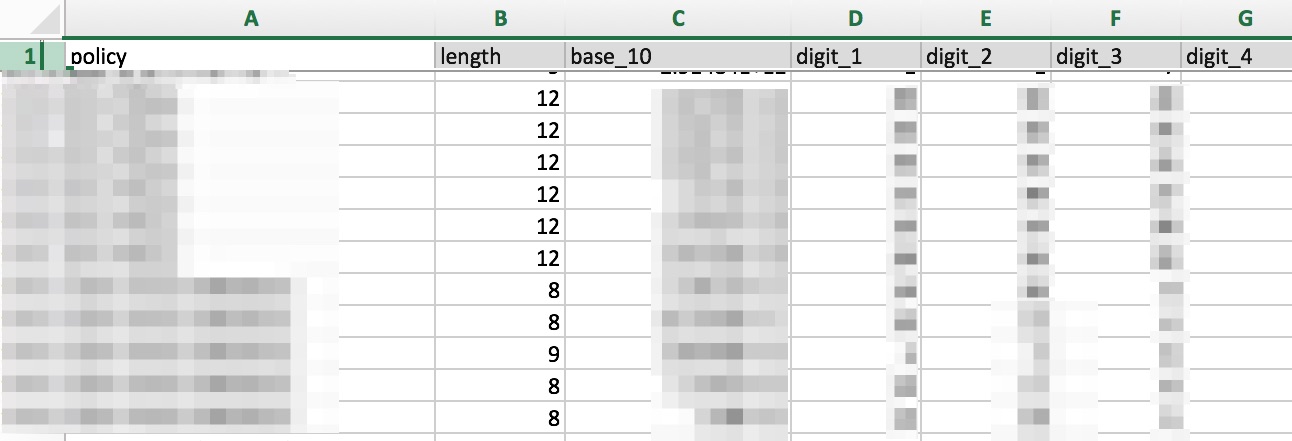
Just for good measure, I added the additional features of number length and base 10. Policy numbers vary in length based on who issued them, so just another dimension for us to draw decision boundaries for. The base 36 number as base 10 was an experimented that yielded little return.
Final Outcome
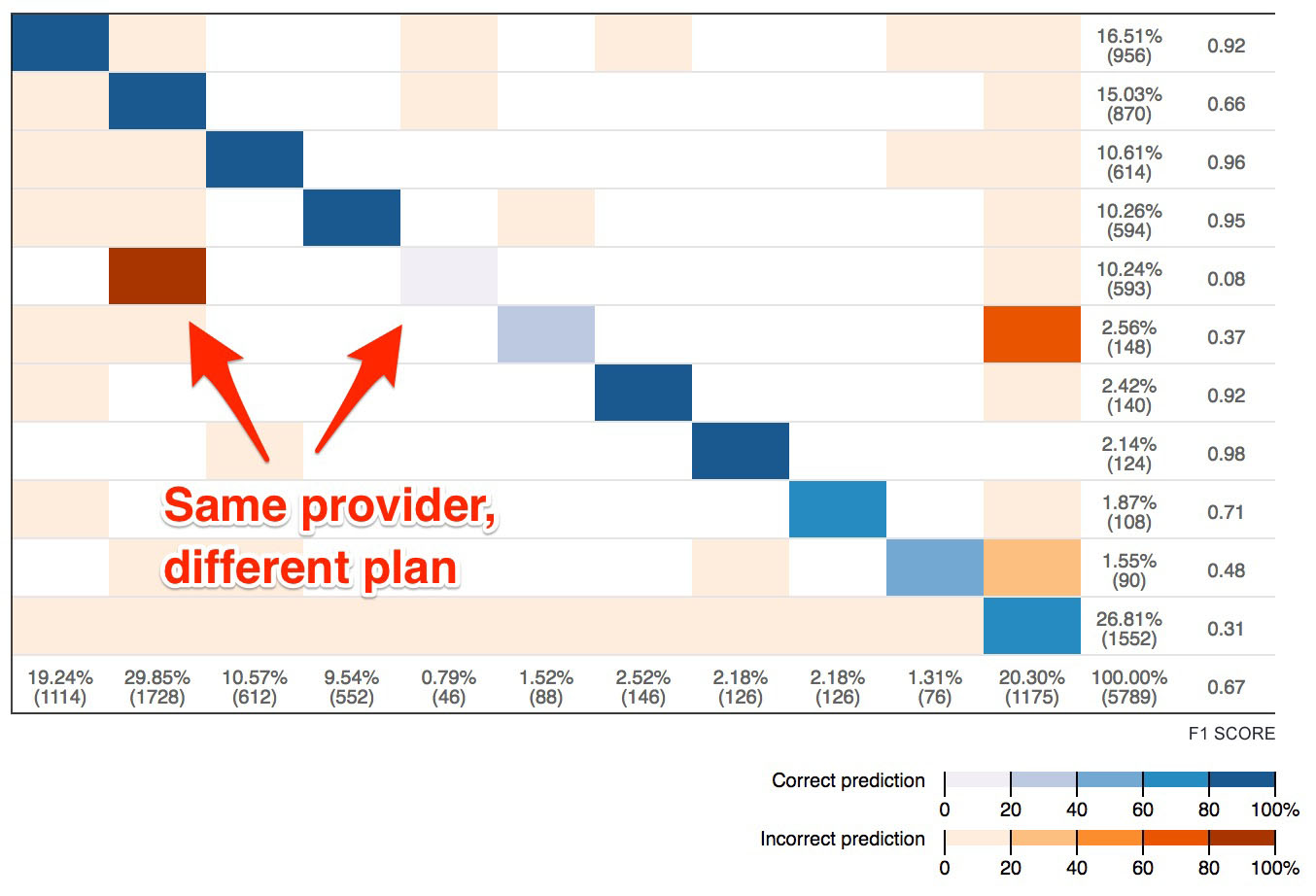 AWS Machine Learning Evaluation
AWS Machine Learning Evaluation
Above, you can see ten of the hundred policies plotted in a score matrix. The blue boxes descending diagonally indicate correct predictions and show this has been pretty successful. The F1 Score for the first row is 92% while the accuracy (not shown) is 99.5%. Not bad!
The two red boxes above might give cause for concern but the mistaken predictions all belonged to the correct company, just a different plan. The service is tasked with showing the top three predictions, so the correct prediction will appear second rather than first, something the service can live with.
Policy Predictor
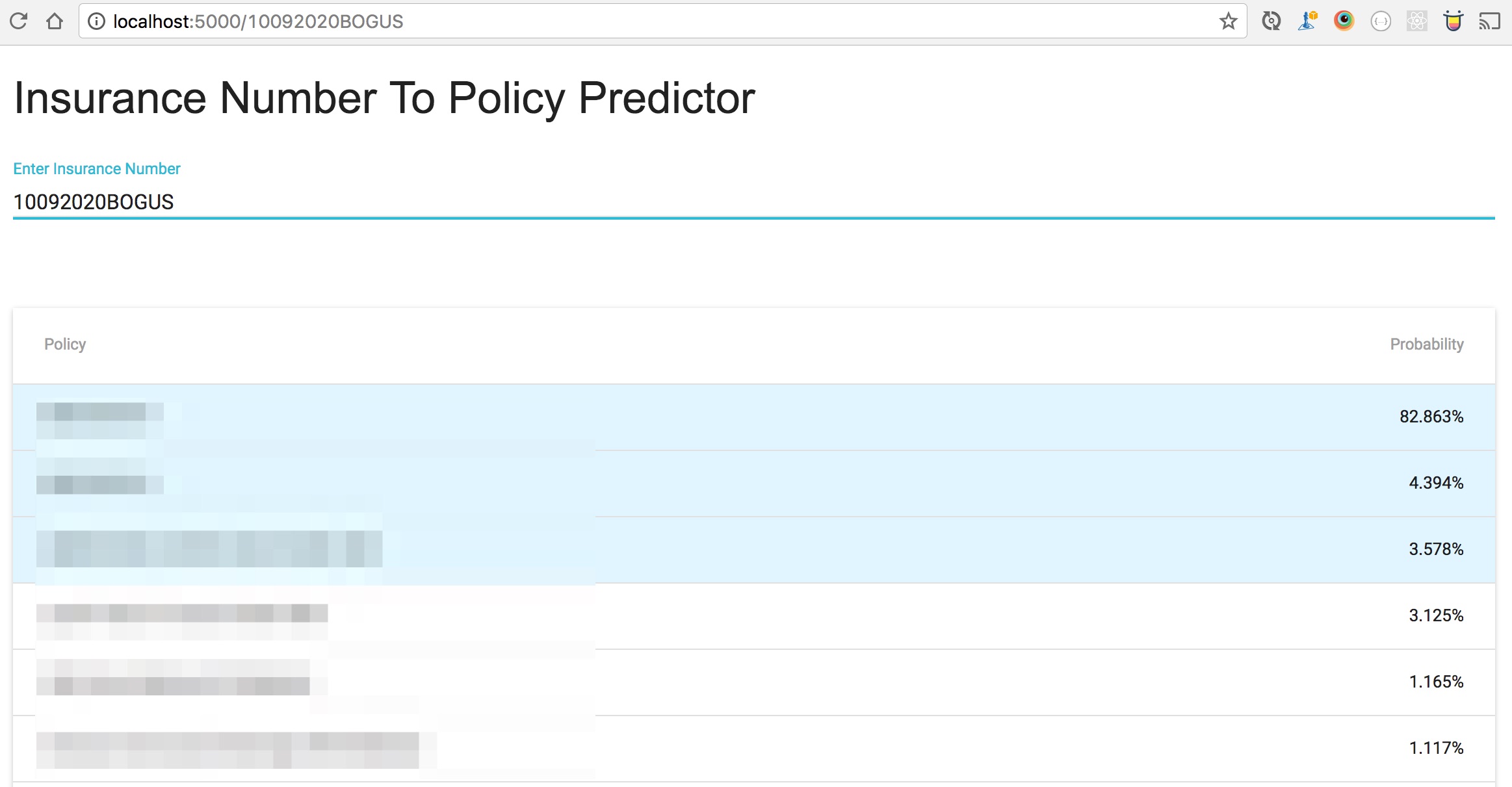
And there you have it, machine learned predictions at your fingertips.
Be sure to check out my post tying this into Rails and Rake for easy model
retraining with rake ml:learn.
After that, it’ll be on to TensorFlow.